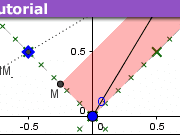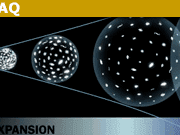Why Does C Have a Particular Value, and Can It Change?
Table of Contents
Short answer:
Because c (speed of light) has units, its value is what it is only because of our choice of units, and there is no meaningful way to test whether it changes. These questions are more meaningful when posed in terms of the unitless fine structure constant. Nobody knows why the fine structure constant has the value it does, and there are controversial claims that its value may have changed.
Long answer:
The SI was originally set up so that the meter and the second were defined in terms of the properties of our planet. The meter was one forty-millionth of the earth’s circumference, and the second was 1/86,400 of a mean solar day. Thus when we express c as 3×108 m/s, we’re specifying the factor by which c exceeds the speed at which a point on the equator goes around the center of the earth (with additional conversion factors of 40,000,000 and 86,400 thrown in). Since the properties of our planet are accidental, there is no physical theory that can tell us why c has this value in the original French-Revolutionary version of the SI.
The base units of the SI were redefined over the centuries. Today, the second is defined in terms of an atomic standard, and the meter is defined as 1/299,792,458 of a light-second. Therefore c has a defined value of exactly 299,792,458 m/s. Again, we find that the numerical value of c has no fundamental significance; it is merely a matter of definition. Physicists often choose to work in a non-SI system of units in which c=1 exactly.
One might object that c could have a numerical value that was not merely an accident of natural or human history, if we instead chose to express it in terms of base units of time and distance that were universal. For example, suppose that SETI succeeds, and we initiate two-way radio contact with an alien civilization. We want to know whether the speed of light has the same value in their neighborhood of the galaxy as it does in ours. We agree to use an atomic standard for our base units. As our distance unit, we’ll use the circumference of the electron’s orbit in the ground state of the Bohr model of hydrogen; and as our unit of time, we agree on the corresponding orbital period. In these units, the speed of light equals 137.0359991. But this number is simply the inverse of the fine structure constant, defined as e2/ħc, where e is the fundamental charge and ħ is Planck’s constant over 2π. It now becomes clear that we can’t find out whether the aliens’ local value of c is or is not the same as ours. If they get 134 instead of 137, it could be because e or ħ is different from where they live.
The moral of this story is that it is never meaningful to ask why a universal constant has a particular value unless that constant is unitless (Duff 2002). Currently, there appear to be about 26 such unitless fundamental constants (Baez 2011). The unitless constant most closely related to c is the fine structure constant. It is meaningful to ask why the fine structure constant has the value it has, but nobody knows the answer.
It has been claimed based on astronomical observations that the fine structure constant varies over time, rather than being fixed (Webb 2001). This claim is probably wrong since later attempts to reproduce the observations failed (Chand 2004). Webb et al. responded with even more extraordinary claims that the fine structure constant varied over the celestial sphere (Webb 2010). Extraordinary claims require extraordinary proof, and Webb et al. have not supplied that; their results are at the margins of statistical significance compared to their random and systematic errors. Even if this claim it is correct, it is not evidence that c varies, as is sometimes stated in the popular press; it is only evidence that the fine structure constant varies.
Further Reading
Duff, “Comment on time-variation of fundamental constants,” http://arxiv.org/abs/hep-th/0208093v3
Baez, Baez, http://math.ucr.edu/home/baez/constants.html
J.K. Webb et al., “Further Evidence for Cosmological Evolution of the Fine Structure Constant,” Phys. Rev. Lett.87 (2001) 091301,http://arxiv.org/abs/astro-ph/0012539v3
J.K. Webb et al., “Evidence for spatial variation of the fine structure constant,” http://arxiv.org/abs/1008.3907
H. Chand et al., Astron. Astrophys. 417: 853
The following forum members have contributed to this FAQ:
bcrowell
pervect
PhD in physics. I teach physics at Fullerton College, a community college in Southern California. I enjoy writing, playing viola, brewing beer, climbing and mountaineering.








Leave a Reply
Want to join the discussion?Feel free to contribute!